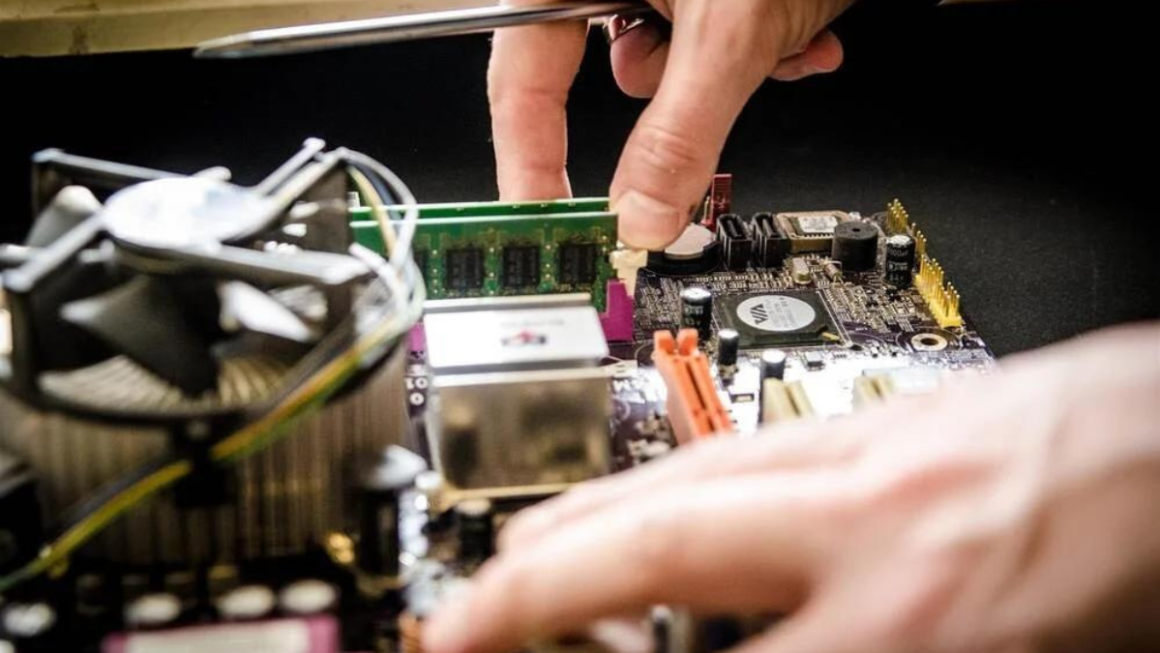In today’s fast-paced world, where stress and anxiety seem to be constant companions, understanding the concept of Aoomaal becomes increasingly vital. Aoomaal, a term deeply embedded in various cultures, encompasses a spectrum of emotions, thoughts, and behaviors. This article delves into the intricate layers of Aoomaal, exploring its historical roots, cultural significance, and profound impact on individual well-being and societal dynamics.
Introduction
Aoomaal, often described as a complex amalgamation of emotions, encompasses feelings of unease, worry, and apprehension. While it’s commonly associated with negative emotions, Aoomaal transcends mere negativity, touching upon various aspects of human existence. Understanding Aoomaal requires a multifaceted approach, considering its historical evolution, cultural interpretations, and modern-day manifestations. By unraveling the mysteries surrounding Aoomaal, we can gain valuable insights into human psychology, societal norms, and avenues for personal growth.
Historical Context
To comprehend Aoomaal fully, we must trace its origins through the annals of history. The concept of Aoomaal finds its roots in ancient philosophical teachings, where scholars pondered over the nature of human consciousness and the underlying causes of emotional distress. From the Stoic philosophers of ancient Greece to the wisdom of Eastern spiritual traditions, Aoomaal has been a subject of contemplation and exploration for millennia. Over time, Aoomaal evolved alongside human civilization, influenced by cultural shifts, religious beliefs, and societal norms.
Theoretical Frameworks
Various theoretical frameworks offer insights into the nature and dynamics of Aoomaal. From a psychological perspective, Aoomaal is often viewed through the lens of cognitive-behavioral theory, which emphasizes the role of thoughts and beliefs in shaping emotions and behaviors. Additionally, existentialist philosophy delves into the existential angst inherent in the human condition, shedding light on the existential Aoomaal experienced in moments of existential crisis and uncertainty. Sociological theories highlight the social determinants of Aoomaal, exploring how factors such as socioeconomic status, gender, and cultural background influence individuals’ experiences of distress.
Components of Aoomaal
Aoomaal encompasses a spectrum of experiences, ranging from mild apprehension to debilitating anxiety. At its core, Aoomaal involves a complex interplay of physical sensations, emotional responses, and cognitive patterns. Physically, Aoomaal may manifest as tension in the body, rapid heartbeat, or gastrointestinal discomfort. Emotionally, individuals may experience feelings of fear, worry, or helplessness. Cognitively, Aoomaal often involves repetitive, intrusive thoughts and exaggerated perceptions of threat. Understanding these components is crucial for developing effective strategies for managing Aoomaal and promoting mental well-being.
Aoomaal in Different Cultures
Across cultures, Aoomaal takes on diverse forms and meanings, reflecting the unique values, beliefs, and traditions of each society. In some cultures, Aoomaal is viewed as a natural part of life, to be accepted and embraced rather than resisted. In others, Aoomaal may be stigmatized or taboo, leading individuals to conceal their struggles and suffer in silence. Rituals and traditions offer cultural frameworks for understanding and coping with Aoomaal, providing rituals for healing, prayer, and community support.
The Impact of Aoomaal
The impact of Aoomaal extends far beyond individual distress, shaping interpersonal relationships, societal dynamics, and global events. At the individual level, Aoomaal can impair daily functioning, undermine self-confidence, and lead to a myriad of physical health problems. In relationships, Aoomaal may strain communication, breed mistrust, and contribute to conflict. On a societal level, Aoomaal can fuel social inequalities, exacerbate existing disparities, and pose significant challenges for policymakers and public health officials.
Aoomaal and Mental Health
In the realm of mental health, Aoomaal is a pervasive and complex phenomenon, often intertwined with other psychological disorders such as depression, obsessive-compulsive disorder, and post-traumatic stress disorder. Left unaddressed, Aoomaal can escalate into chronic anxiety disorders, impairing individuals’ quality of life and functioning. However, effective interventions, such as cognitive-behavioral therapy, mindfulness-based stress reduction, and medication, offer hope for individuals struggling with Aoomaal.
Aoomaal and Spirituality
Spirituality offers a profound framework for understanding and coping with Aoomaal, providing individuals with a sense of meaning, purpose, and connection beyond the material world. Across religious traditions, spiritual practices such as prayer, meditation, and ritual provide solace and support in times of Aoomaal. Moreover, spiritual beliefs offer perspectives on suffering, resilience, and transcendence, guiding individuals through the darkest moments of despair toward a deeper sense of inner peace and acceptance.
Aoomaal in Literature and Art
Artistic expression has long served as a vehicle for exploring and expressing the depths of human emotion, including Aoomaal. From the poetry of Rumi to the paintings of Van Gogh, artists throughout history have captured the essence of Aoomaal in their works, inviting viewers to reflect on the complexities of the human experience. In literature, Aoomaal serves as a central theme in countless novels, short stories, and plays, offering readers insights into characters’ inner struggles and existential dilemmas.
The Role of Technology
In today’s digital age, technology plays a dual role in shaping Aoomaal, both exacerbating and alleviating individuals’ distress. On one hand, the constant barrage of information, social media notifications, and digital distractions can fuel Aoomaal, leading to information overload and digital burnout. On the other hand, technology offers innovative solutions for managing Aoomaal, such as mental health apps, online support communities, and virtual therapy sessions.
Aoomaal and Productivity
The relationship between Aoomaal and productivity is complex and multifaceted. While moderate levels of Aoomaal can enhance motivation and focus, excessive Aoomaal can impede productivity, creativity, and decision-making. Finding a balance between Aoomaal and productivity requires cultivating self-awareness, setting realistic goals, and implementing effective time-management strategies. Moreover, fostering a supportive work environment that values employee well-being and work-life balance is essential for promoting productivity and preventing burnout.
Cultural Responses to Aoomaal
Cultural responses to Aoomaal vary widely, influenced by cultural norms, values, and traditions. In some cultures, Aoomaal may be stigmatized or viewed as a sign of weakness, leading individuals to avoid seeking help or disclosing their struggles. In others, Aoomaal may be acknowledged and addressed openly, with culturally specific rituals and practices for healing and support. Understanding cultural responses to Aoomaal is crucial for providing culturally sensitive and effective interventions that resonate with individuals’ beliefs and values.
Addressing Aoomaal in Education
Educational institutions play a pivotal role in addressing Aoomaal among students, providing resources, support, and education on mental health and well-being. Integrating Aoomaal into the curriculum, offering mental health workshops and support groups, and training faculty and staff in recognizing and responding to Aoomaal are essential steps toward creating a mentally healthy learning environment. Moreover, fostering a culture of empathy, understanding, and inclusivity can empower students to seek help and support when needed.
Aoomaal in the Workplace
In the workplace, Aoomaal can have significant implications for employee well-being, productivity, and organizational
Aoomaal and Gender
Gender plays a significant role in shaping individuals’ experiences of Aoomaal, with societal expectations and norms often influencing how Aoomaal is perceived and expressed. In many cultures, traditional gender roles may dictate that men should be stoic and unemotional, leading to underreporting of Aoomaal and reluctance to seek help. Conversely, women may face gender-specific stressors, such as the pressure to balance caregiving responsibilities with work demands, which can exacerbate Aoomaal. Recognizing and addressing gender differences in Aoomaal experiences is essential for providing gender-sensitive care and support.
Aoomaal in the Digital Age
In the digital age, Aoomaal takes on new dimensions, shaped by the constant connectivity and information overload of the online world. Social media platforms, while offering opportunities for connection and community, can also contribute to feelings of inadequacy, comparison, and FOMO (fear of missing out), fueling Aoomaal. Moreover, cyberbullying and online harassment can exacerbate Aoomaal, particularly among vulnerable populations such as adolescents and young adults. Finding a healthy balance between online engagement and offline self-care is essential for protecting mental well-being in the digital age.
Aoomaal and Economic Impact
The economic impact of Aoomaal is profound, affecting individuals, organizations, and societies as a whole. From healthcare costs associated with treating Aoomaal-related disorders to lost productivity and absenteeism in the workplace, the financial burden of Aoomaal is staggering. Moreover, socioeconomic disparities exacerbate the impact of Aoomaal, with marginalized communities facing greater barriers to accessing mental health care and support. Addressing the economic impact of Aoomaal requires a comprehensive approach that addresses underlying social determinants of health and promotes equitable access to mental health services.
Breaking Stigmas and Seeking Help
Breaking the stigma surrounding Aoomaal is essential for promoting early intervention and effective treatment. By fostering open dialogue, challenging stereotypes, and sharing personal stories of recovery, we can create a culture of acceptance and support for individuals struggling with Aoomaal. Moreover, educating the public about the prevalence and treatability of Aoomaal-related disorders can empower individuals to seek help without fear of judgment or discrimination. Together, we can break down barriers to mental health care and ensure that everyone has access to the support and resources they need to thrive.
Future Directions
Looking ahead, the future of Aoomaal holds both challenges and opportunities. Emerging technologies such as artificial intelligence and virtual reality offer innovative solutions for diagnosing, treating, and managing Aoomaal. Moreover, shifting societal attitudes toward mental health and well-being are creating new opportunities for destigmatizing Aoomaal and promoting early intervention. By investing in research, education, and advocacy, we can continue to advance our understanding of Aoomaal and develop more effective strategies for prevention and treatment.
Conclusion
In conclusion, Aoomaal is a complex and multifaceted phenomenon that touches upon various aspects of human existence. From its historical roots to its modern-day manifestations, Aoomaal reflects the intricate interplay of biological, psychological, and social factors. By exploring the origins, impact, and future directions of Aoomaal, we can gain valuable insights into human nature, promote mental health and well-being, and build a more compassionate and inclusive society.
FAQs (Frequently Asked Questions)
- What are the common signs of Aoomaal?
- Common signs of Aoomaal include persistent worry, excessive fear, physical symptoms such as rapid heartbeat or stomachaches, and avoidance of certain situations or activities.
- How does culture influence the perception of Aoomaal?
- Culture influences how Aoomaal is perceived, expressed, and treated. Cultural norms, beliefs, and values shape individuals’ experiences of Aoomaal and influence whether it is stigmatized or accepted within a given society.
- Is Aoomaal always negative, or can it have positive aspects?
- While Aoomaal is often associated with negative emotions such as anxiety and fear, it can also serve as a motivating force for change and growth. In moderate amounts, Aoomaal can enhance performance and focus, leading to positive outcomes.
- How can individuals manage their Aoomaal effectively?
- Managing Aoomaal effectively involves developing healthy coping strategies, such as mindfulness meditation, exercise, and seeking social support. Additionally, therapy and medication can be beneficial for individuals with severe Aoomaal.
- What role does spirituality play in coping with Aoomaal?
- Spirituality can provide individuals with a sense of meaning, purpose, and connection, offering comfort and support in times of Aoomaal. Spiritual practices such as prayer, meditation, and reflection can promote resilience and inner peace.
- Are there any cultural practices that specifically address Aoomaal?
- Yes, many cultures have specific rituals, traditions, and practices for addressing Aoomaal, such as prayer ceremonies, healing rituals, and community support networks.
- How can employers support employees dealing with Aoomaal?
- Employers can support employees dealing with Aoomaal by implementing workplace wellness programs, providing mental health resources and support services, and fostering a supportive work environment that values employee well-being.
- Is there a correlation between Aoomaal and physical health?
- Yes, Aoomaal can have significant effects on physical health, contributing to conditions such as hypertension, cardiovascular disease, and gastrointestinal disorders. Managing Aoomaal effectively is essential for promoting overall health and well-being.
- What are some misconceptions about Aoomaal?
- One common misconception about Aoomaal is that it is a sign of weakness or character flaw. In reality, Aoomaal is a common and treatable mental health condition that affects people from all walks of life.
- How can I help a loved one struggling with Aoomaal?
- You can help a loved one struggling with Aoomaal by offering your support, listening nonjudgmentally, and encouraging them to seek professional help if needed. Additionally, educating yourself about Aoomaal and available resources can help you provide informed support.



